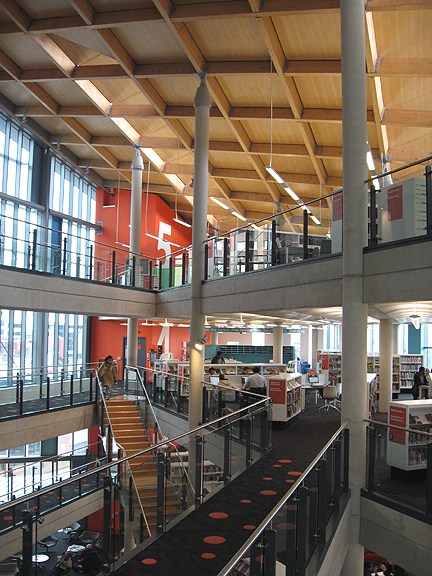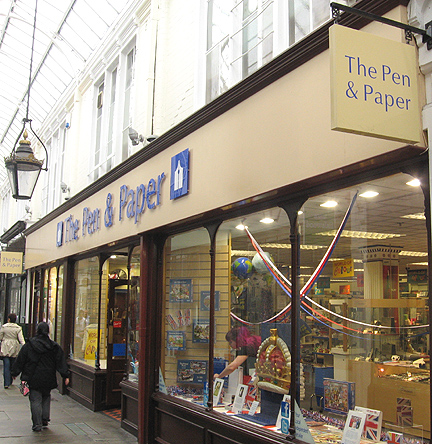
“Illusory, too,
that lost dark playground after rain.
The noise of trains,
gunshots in what they once called Tiger Bay.
Only real this smell
of ripe, damp earth when the sun comes out,
a mixture of pungencies,
half exquisite and half plain.”
~ Dannie Abse, Return to Cardiff
From the Llandaff pilgrims’ way, my steps recommenced toward the capitol city of Cardiff. With the slates wiped clear by a night’s rain, misted paths to Cathedral Road blended my walk onto busy streets. From long row-house-lined avenues in Pontcanna, I took to paths that traverse considerable greenways en route to the city center. Bute Park comprises a northwest-southeast corridor that flanks the River Taff. Extending from the oblong park area, there are roads leading to the city’s waterfront. At the southeastern end of the long park, Cardiff Castle stands as the city’s namesake, Caerdydd (“fortress on the Taff”).

Cardiff Castle.


Circle of standing stones, near Cardiff Castle.
Continuing south of the castle is the colorful and densely structured downtown. With the approach, it was clear to me how this is the largest city in Wales. Walking through successions of urban neighborhoods, Cardiff’s perimeters are not easily seen. Strongly reminded of the familiar aesthetic of Boston, I could enjoy the coexistence of intricacy, vastness, and intimacy. Within a short walk in Cardiff, ancient stone structures, large office buildings, narrow lanes, a massive rugby stadium, and tiny shops can be easily connected.


From jousts in the castle to goals at Millennium Stadium.


Spillers is the world's oldest record store, dating back to 1894.
Replete with numerous intrigues, the finest cities are by nature encyclopaedic. Having started life and adulthood amidst the dense thicks of Paris and New York, cities remain in my mind as enchanted forests. Encyclopaedian and thesaurian, a sizeable urban and cultural center comprises countless subjects in one voluminous proximity. At the same time, intricacies and tastes still need to be discovered. Exploring a city is often an evaluative journey, not entirely unlike mountain hiking. Seeking and finding are best done on foot- walking, musing, and speculating- through and between structures and streets. Exploration is also best done with patience.




Well-decorated shop windows demand some appreciation. Notice the ages of architecture, the delectables sold from push-carts, and the newspapers’ front page stories. I like asking people about their favorite cafés; there are always beneficial answers. City serendipitous finds itself when heading to one site becomes a string of pleasant encounters with additional places and people.

Pontcanna and the River Taff.


As journeys of any length or location can draw benefits, so my Cardiff sojourn rewarded me with enduring treasures. From Pontcanna through Canton and Riverside, I made the very long walk along the Butetown avenues to the Cardiff docks. I had to see where the River Taff meets the Bay whose Atlantic waters are shared far away by the State of Maine. Walking along the piers, the stark combination of 19th and 21st centuries brought to mind all I learned about Cardiff’s past as the world’s busiest coal-exporting harbor. In the sweep of wind, then rain, then sun, there were ships to admire near some shining new buildings.

Tiger Bay (Bae Teigr), named after the fierce tides, second in height only to those of Downeast Maine and the Bay of Fundy.


On the long hike back to the city’s center, I followed Lloyd George Avenue. Pedestrian lanes emanate from the lively shop-filled promenade called The Hayes (Yr Ais, in Welsh), at the base of which is the light-filled new Cardiff Library. Along the proximate streets are the famous indoor-outdoor skylit Victorian shopping arcades, each unique and filled with the sounds and colors of commerce; one of the arcades serves as a large farmers’ market.

Cardiff Library, The Hayes.


Weaving through mazes of glass galleries, with small collected purchases, on one occasion I darted outdoors to find the exuberance of a street minister. He joyfully proclaimed the sweetness of the realm of God. I just had to write down one of his invitations to have faith and be filled with the Holy Spirit: “Come taste the strawberry jam of Heaven!” My imaginings pictured bright angels dining on savoury Welsh cakes, aromatic tea, and Heavenly jam. Indeed, sweet gratitude preceded and followed me, from The Hayes up to Queen Street where I saw the eloquently poignant Mother and Son sculpture. I was reminded of my lifetime of encouraging words and reminiscences from my mother to make the travel to Wales.

As journeys of all lengths and locations invite rewards, so my Cardiff sojourn gathered memorable treasures. Hard-travelling pilgrims must have their nutrients, and providentially I found such venues as The Halfway pub that displays a Princess 300 typewriter in one of its windows, and serves the many varieties of Cardiff’s Brains Ale.


Writing with Brains at The Halfway.

The Halfway displays a Princess,
while Her Majesty the Queen's Diamond Jubilee is celebrated in The Hayes.

Another dining highlight was The Louis, which surely serves the pot-roast of Heaven. As with each and every dining establishment I visited in Wales, the welcomes were earnest and conversational. Everyone has something to say, and it’s worth a listen.

Pilgrim's feast in Cardiff.


Yet another serendipitous stroke chimed in these navigations as my steps reached The Pen and Paper Stationery Company, in the Royal Arcade. Browsing the shop and chatting with some of the staff was treasure in itself, though I invariably joined the ranks of their customers.



As with so many Cardiff shops, Pen and Paper presents thoughtful and artistic window displays. Banners, castle towers, lightships, flagstones, churches, teapots, confections, and umbrellas; these images visited my closed eyes following lengthened days of city sojourning. They remain with me to this day, and will ever accompany my thoughts and paces.
































